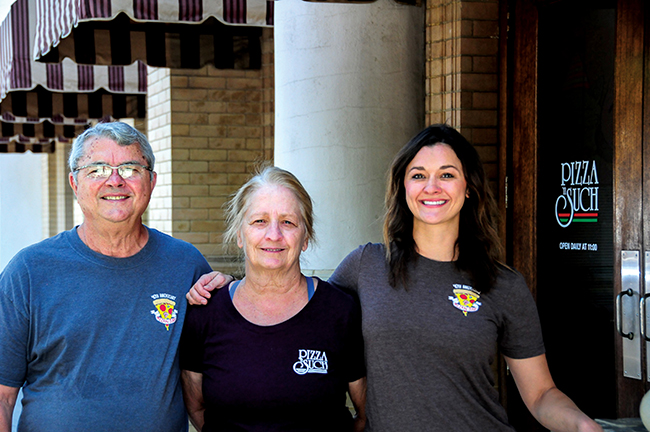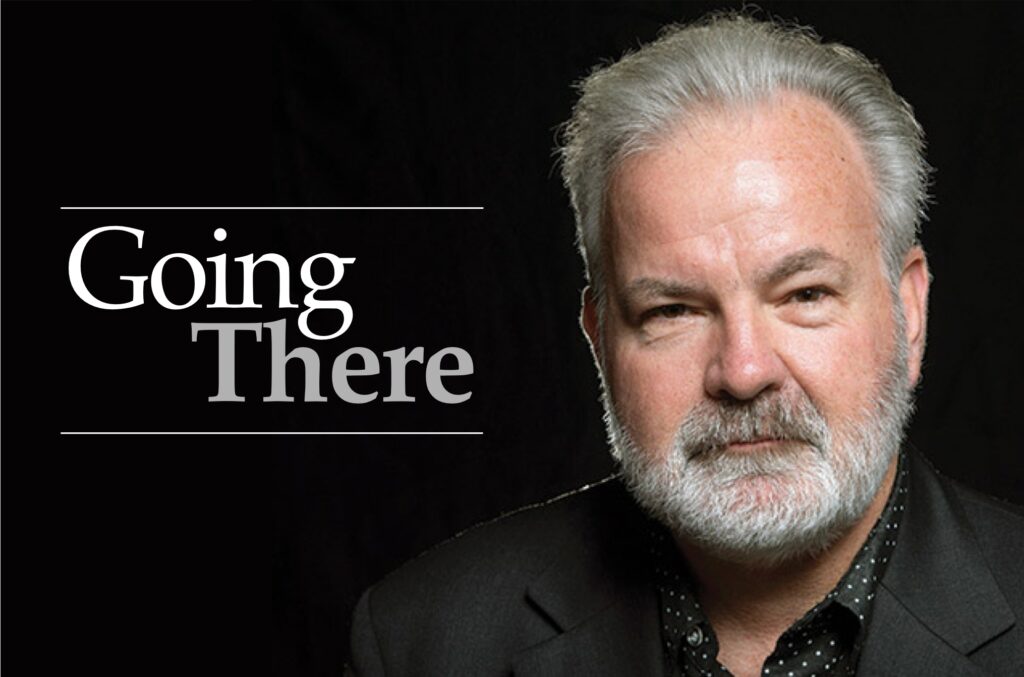Readers comments 12-1-17
Funding the facility
Dear Editor:
On December 12, the city council will discuss the new police station recommendations presented by the ad hoc committee this past June.
While keeping the facility at the current location passed the committee by a unanimous decision, there was plenty of disagreement among committee members about pretty much everything else.
After the epic failure of Measure PS, about half the committee wanted to cap the cost at $20 million, while the other half wanted a cap of $30 million. They eventually agreed (via a narrow margin) to a $25 million facility.
Some members voting for the recommendation still thought $25 million was too much, while all the dissenting votes thought $25 million wasn’t enough. At a cost of $900 a square foot, voters will ultimately have to decide whether including a 900 square foot fitness center in the facility is worth the additional $800,000 price tag.
When the debate turned to how the facility would be financed, there was even more disagreement. And there’s no doubt the debate about what is fair, and who should pay will continue right up until the last ballot is counted. Some important details, however, are not absent from the debate.
Under the current proposals presented by the city, the parcel tax option would cost taxpayers $2.27 million more than the general obligation bond option. With just one little tweak, the city could reduce the cost of the parcel tax by $1.14 million.
As proposed, the city wants to borrow an extra $2.166 million to fund the capitalized interest costs during the two years of construction. This money is used to pay interest only on the bonds, during construction. The problem is that the city will collect over $3 million in taxes during this same period, and that money will sit in the city’s general fund and won’t be used to pay down any principle until after construction is completed.
I propose, instead, the city fund the capitalized interest with the $1.5 million it has earmarked for furniture and fixtures, along with an additional $465,000 from the general fund.
This change, according to the underwriters, would save taxpayers $1.14 million. The $3 million in taxes collected during construction would then be used to reimburse the city’s general fund.
Under this scenario, the question now becomes, is it worth it to the city to pay an additional $1.13 million (rather than $2.27 million) for a parcel tax in order to save residential homeowners $5.3 million in property taxes? Given that the federal tax deduction for property taxes is on the chopping block for individuals but not for businesses, a parcel tax should be even more appealing to residents.
Regardless of what type of funding mechanism taxpayers will ultimately vote on (general obligation bond or parcel tax), the city, along with the underwriters want to issue callable bonds. Callable bonds give the city the option after 10 years to call (purchase) the bonds at a predetermined price.
If called, purchasing the bonds would be paid for by issuing new bonds at lower interest rates. This option would benefit the city only if interest rates dropped significantly from current rates.
The underwriters, who do not have a fiduciary duty to the city, would benefit “bigly,” to the tune of hundreds of thousands of dollars in additional fees, if the city exercises the option. Here’s the catch: the option isn’t free. That is, bond investors don’t like call options because it increases uncertainty. As a result, callable bonds require higher interest rates.
In the end, the city and the underwriters are proposing that Claremont taxpayers pay an additional $125,000 per year in interest, with the hope that interest rates will fall far enough from the current historical lows to recoup their $2.875 million wager and maybe save a little bit more. However, just a few months ago, the city was arguing that interest rates will likely to go up. Issuing non-callable bonds would guarantee $2.875 million in savings to taxpayers over the life of the bonds.
The proposed construction budget includes $3.15 million to cover “contingencies” and “cost escalation.” Without oversight, these funds are a blank check to spend $3.15 million however the city wants. The city has presented to the community detailed blueprints and architectural drawings of what the police department wants, and what the residents of Claremont will get for their money.
The city should create an accountability/oversight committee to ensure that residents are getting what they agreed to, nothing less, and nothing more that could be added after the fact, and paid for with these funds. This is not unlike what the CUSD did to ensure that the school bond proceeds were properly spent.
There is little debate that the city needs to upgrade its police station. However, that does not mean that residents shouldn’t require the city to be prudent and exercise fiscal restraint. Especially, given what the city has spent on legal fees over the past 18 months.
If you have questions or an opinion about any of these details, please show up to the city council meeting on December 12.
Matt Magilke
Claremont
Lucky Claremont
Dear Editor:
How lucky are we, the Claremont citizens? Wow, our city leaders saved us $5.8 million! But wait, how much did it cost us to save that amount? Almost $7,000,000.
Can hardly wait to see what other great deals our city leaders come up with. Don’t stand too close or your pocket may be picked!
Wouldn’t those monies have been better spent to help offset costs on a new police facility?
Don Russell
Claremont
City attorneys
Dear Editor:
As the law firm of Best Best & Krieger (BB&K) will soon no longer be representing Claremont, now is perhaps the ideal time to ponder alternative arrangements for the city’s legal representation. Let us note at the outset that no one single arrangement will ever be perfect for all circumstances. What we do need is the best arrangement, overall.
Here are some issues and/or problems I have observed with the existing BB&K-style arrangement:
1) The city attorney has been remotely located in Orange County, making routine, day-to-day access more cumbersome.
2) Claremont has had BB&K on retainer essentially, so Claremont’s legal business has had to compete with the demands of other cities with whom BB&K is also contracted.
3) Activities which are more properly city attorney responsibilities have been delegated to other city staff, distracting and burdening them.
4) Due to the part-time nature of BB&K’s representation, routine oversight, review, and updating of city documents (for example codes, ordinances, the general plan, etc.) has been neglected.
For an alternative vision of the city’s legal representation, first the conclusion, then the rationale. The conclusion is that the best arrangement, overall, might rather be a full-time, subcontracted city attorney with an office in city hall. Why?
Full-time: to allow for focused, fully-dedicated legal oversight, review and involvement that would not have to compete for attention with the demands of any other cities or organizations. (Specialized projects could still be out-sourced, if necessary.)
Sub-contracted: via an “at will” employment contract, which would allow an attorney to be replaced if things are not working out. With an office in city hall: to offer easier, more convenient, day-to-day access for routine and non-routine matters.
Douglas Lyon
Claremont
Immunizations
Dear Editor:
The November 17 article regarding the vaccination video provides a troubling glimpse of the effects of SB 277.
SB 277 requires CUSD to deny access to public school students who are not in compliance with pediatric immunization recommendations, which have been made into legal requirements.
As shown, this situation can create a tense, adversarial relationship between families and school districts to the point where CUSD felt compelled to bring a liaison police officer to a non-school location just to talk to a parent and a parent felt the need to make a video of the encounter which she perceived as harassment.
How did we arrive at this position? By making two choices: 1) assuming that the current medical recommendations for vaccination are not subject to rational scientific challenge; and 2) favoring what is believed to be the communal good over the rights of the individual to make medical decisions.
But these choices are just that, and different choices have been made by other advanced scientific, industrial and democratic countries. Fifteen out of 30 EU countries (the EU28 plus Iceland and Norway) have no compulsory vaccination program, and another four EU countries mandate only one, three or four vaccines.
In contrast, California mandates 34 vaccines before age five. The standard of medical care is continually evolving and individuals wish to make their own medical choices and determine what happens to their bodies. This is common sense. This common sense should also apply to vaccination.
Sam Kole
Claremont
Michael Hecht
Dear Editor:
It was with great sadness that I read in the November 24 COURIER edition of the death of my friend Michael Hecht.
During the years I was an active member of Temple Sholom of Ontario, Michael always greeted me with his big smile accompanied by enjoyable conversation. Having discontinued my membership in the congregation a few years ago, he is among those I have continued to miss.
Michael was a particularly valued member of our Torah discussion group, taking very seriously his carefully studied preparations for our weekly discussions, during which he consistently made very succinct contributions which were greatly appreciated by the others present.
I considered him a valued friend—as he will remain in my memory.
Don Fisher
Claremont
Student vaccination video
Dear Editor:
The recent article in the COURIER titled “Video surfaces over student vaccination dispute with CUSD” left me with many questions unanswered.
If the police officer was present to “keep the peace,” does this imply the CUSD employee expected this encounter to turn violent?
Why did the employee only state his name, without showing any form of identification in the video?
Is it common practice for CUSD employees to approach parents of students outside of the professional space (e.g. calling the parents in for a meeting at a CUSD office)? What actions are being taken in response to this incident?
I encourage all readers to imagine that you were put into this situation. You are approached by a stranger and a police officer. The stranger states that he is a CUSD employee but fails to show any form of identification. The police officer remains silent.
The CUSD employee then asks for your child’s immunization records, which is private information, in a very public and nonprofessional environment. How would you react? If anything, you would be wary of the two people who approached you. Thus, Ms. Rasheed’s skepticism was not unwarranted.
However, more information needs to be given on this incident. The beginning context prior to this incident and the measures that are being taken after this incident, are necessary to answer these important questions: Why did the CUSD employee approach Ms. Rasheed in this way? Is it normal? And should other parents expect to have encounters like these?
Victoria Huynh
Claremont








0 Comments